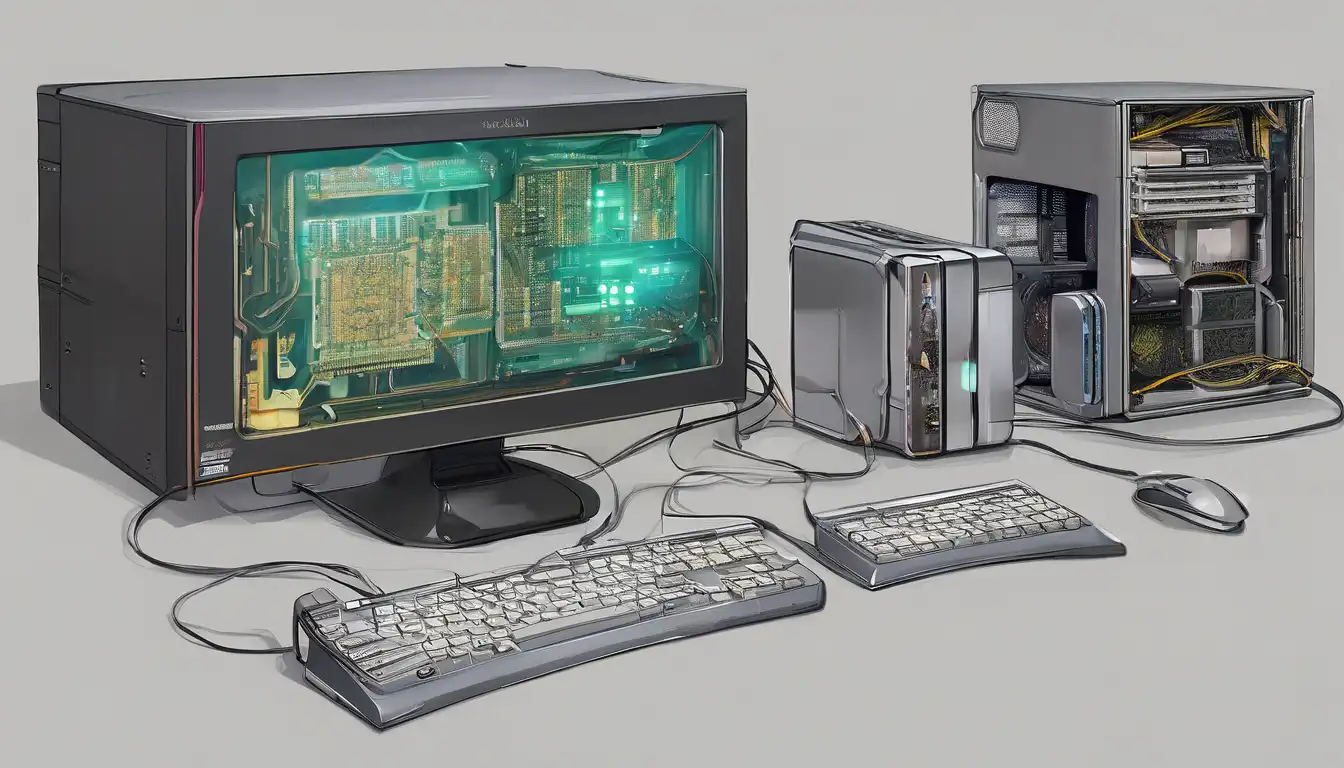Revolutionary Advances in Computer Hardware Technology
The landscape of computer hardware technology is undergoing a seismic shift, with innovations emerging at an unprecedented pace. From quantum computing breakthroughs to AI-optimized processors, the latest developments are reshaping how we interact with technology and pushing the boundaries of computational power. These advancements are not just incremental improvements but represent fundamental changes in how hardware components are designed, manufactured, and utilized.
Next-Generation Processor Architectures
Modern CPUs are evolving beyond traditional multi-core designs to embrace heterogeneous computing architectures. Companies like Intel, AMD, and ARM are developing processors that combine high-performance cores with efficiency cores, allowing for dynamic workload optimization. The latest innovations include:
- 3D stacking technology that vertically layers compute dies
- Chiplet designs enabling modular component integration
- AI-accelerated instruction sets for machine learning workloads
- Advanced power management systems reducing energy consumption by up to 40%
These architectural improvements are particularly evident in the latest server processors, where performance-per-watt has become a critical metric for data center efficiency.
Graphics Processing Unit Revolution
The GPU market has transformed from gaming-focused components to essential tools for AI research, scientific computing, and creative workflows. Recent innovations include:
- Real-time ray tracing capabilities becoming standard across price points
- Tensor cores optimized for deep learning applications
- Memory bandwidth exceeding 1TB/s in high-end models
- Multi-chip module designs enabling unprecedented scalability
These advancements are driving breakthroughs in fields ranging from medical imaging to autonomous vehicle development, making GPUs more versatile than ever before.
Memory and Storage Breakthroughs
Storage technology has seen remarkable innovations with the advent of PCIe 5.0 SSDs offering read speeds exceeding 14,000 MB/s. Meanwhile, memory technology is evolving with:
- DDR5 memory delivering twice the bandwidth of previous generations
- 3D XPoint technology bridging the gap between RAM and storage
- Compute Express Link (CXL) enabling coherent memory sharing between devices
- Storage-class memory offering persistent storage at near-RAM speeds
These developments are crucial for handling the massive datasets required by modern applications, from big data analytics to real-time video processing.
Quantum Computing Hardware Progress
While still in early stages, quantum computing hardware has made significant strides. Recent innovations include:
- Increased qubit stability and coherence times
- Error correction techniques improving computational reliability
- Cryogenic control systems operating at near-absolute zero temperatures
- Photonic quantum processors enabling room-temperature operation
These advancements bring us closer to practical quantum computing applications that could revolutionize fields like cryptography, drug discovery, and optimization problems.
Cooling and Power Delivery Innovations
As component densities increase, thermal management has become a critical challenge. Recent cooling innovations include:
- Two-phase immersion cooling systems for data centers
- Vapor chamber technology replacing traditional heat pipes
- Liquid cooling solutions becoming mainstream for high-performance systems
- Advanced thermal interface materials improving heat transfer efficiency
Power delivery has similarly evolved with gallium nitride (GaN) and silicon carbide (SiC) transistors enabling more efficient voltage regulation and reduced power losses.
Connectivity and Interface Advancements
The latest connectivity standards are transforming how components communicate:
- PCIe 6.0 doubling bandwidth to 256 GB/s
- USB4 offering 40Gbps speeds with universal compatibility
- Wi-Fi 7 providing multi-gigabit wireless performance
- Thunderbolt 4 enabling single-cable docking solutions
These interfaces are essential for supporting the high-bandwidth requirements of modern workloads, from 8K video editing to real-time collaborative applications.
Specialized Hardware for AI and Machine Learning
Dedicated AI accelerators are becoming increasingly important as machine learning workloads grow more complex. Innovations include:
- Tensor processing units (TPUs) optimized for neural network inference
- Field-programmable gate arrays (FPGAs) for customizable acceleration
- Neuromorphic chips mimicking biological neural networks
- Edge AI processors enabling on-device machine learning
These specialized components are driving the AI revolution, making complex computations feasible on everything from smartphones to autonomous systems.
Sustainability and Eco-Friendly Hardware
The hardware industry is increasingly focused on sustainability, with innovations including:
- Low-power designs reducing energy consumption
- Recyclable materials in component manufacturing
- Modular designs enabling easier upgrades and repairs
- Energy-harvesting technologies for IoT devices
These environmentally conscious approaches are becoming competitive advantages as consumers and enterprises prioritize sustainability.
Future Outlook and Emerging Trends
The hardware innovation landscape continues to evolve rapidly, with several emerging trends shaping the future:
- Photonic computing using light instead of electrons
- Memristor-based systems enabling analog computation
- Biological computing interfaces connecting hardware with neural systems
- Self-healing materials extending component lifespan
These cutting-edge developments promise to further transform how we design, build, and utilize computer hardware in the coming years.
The pace of innovation in computer hardware shows no signs of slowing, with each breakthrough building upon previous advancements to create increasingly powerful, efficient, and specialized computing systems. As these technologies mature and become more accessible, they will continue to drive progress across all sectors of the digital economy.
